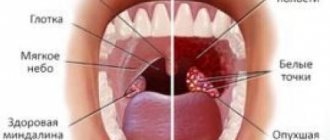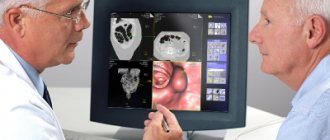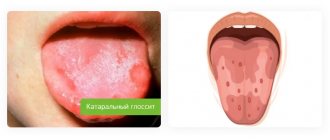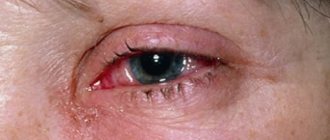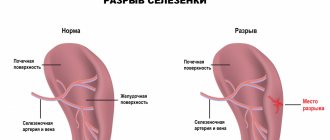In this article, we will analyze the main factors for the formation of pus in the gums, and what treatment of the pathology is recommended by the dentists of the Dentika clinic.
The accumulation of exudate in the gingival membranes is a dangerous symptom indicating the development of an inflammatory process. This phenomenon should not be ignored. If an inflamed infiltrate appears in the mouth, you should immediately seek professional help. No less serious organic diseases can be hidden under the guise of dental pathologies. Only a doctor can correctly diagnose the disease and select the optimal treatment.
Why does pus come out of the gums?
The pathological process is of infectious origin and develops when food particles enter the gum pocket and decay begins. Dead microbes and dead immune cells (exudate) gradually accumulate inside. An abscess indicates infection of deep tissues. The human body strives to protect itself and cleanse the affected area from the pathogen. When pathogens spread, blood circulation increases. As a result, immune cells are rapidly transported to the source of infection to detect and neutralize bacteria.
Then pus accumulates on the upper or lower gum and a purulent sac is formed. Gradually, the flux expands, reaches the periosteum, causing swelling, swelling of the gum tissue and the inside of the cheeks. The mucous membrane of the jaw becomes red and a fistula forms on it. A fistula is a kind of channel through which there is a copious flow of exudate from the source of infection to the outside.
Signs indicating a problem
The first signs of infection of the oral mucosa are pain and discomfort during meals. A fistula in the jaw is not at all a harmless phenomenon. Clinical symptoms of the pathology:
- Taste of bitterness.
- Unpleasant sensations when eating cold and hot foods.
- Burning throbbing pain.
- Facial asymmetry.
- Discomfort during palpation.
- The gums are swollen, inflamed, when pressure is applied there is pus, blood, and an unpleasant odor from the fistula.
- Cheek swelling.
- Edema.
- Changing the natural shade of teeth.
The formation of a fistula in the jaw indicates a hidden course of the pathological process in the body. The diseased unit near which the abscess is located is most often covered with plaque or affected by caries. If you ignore the symptoms, the condition will worsen. Possible increased body temperature, weakness, migraine, enlarged submandibular lymph nodes. If any of the listed symptoms appear, you should seek qualified medical help.
The condition when pus has formed in the gum is called an abscess. The progression of pathology leads to disruption of the dentogingival apparatus, increased mobility of units and their loss. With inflammation of the periosteum of the upper jaw, swelling of the lip and facial area under the eye increases. When the lower rows are affected, swelling of the chin and cheek area is observed. Swelling may remain for two to five days after treatment.
Symptoms of the disease
Regardless of the location, the formation of an abscess goes through the same stages, so the symptoms of a boil on the wing of the nose and the symptoms of an internal boil are the same.
The disease occurs in two stages. The first stage is the infiltration stage. It begins with inflammation of the hair follicle. The stage lasts a day or two. Clinically, this is manifested by the following symptoms: the appearance of a painful lump that turns red and swells. A black dot is visible in the center of the seal. The pain intensifies while talking or eating. Headaches, weakness, and elevated body temperature appear - these are symptoms of an ongoing inflammatory process.
The next stage, the abscess formation stage, takes from three to seven days. Its main symptom is a softening of the compaction and the appearance of a white-yellow tip on it, which is called the core of the boil. Relief occurs when the rod breaks through and the contents of the abscess come out. At this moment, the unpleasant and painful symptoms begin to subside, and the patient feels much better.
Types of dental abscess
Pyogenic bacteria enter healthy gum tissue through the bloodstream or due to mechanical damage. An abscess appears in the area of the affected element. When the abscess matures, the mucous membrane acquires a bluish tint, and a whitish spot or characteristic bubble appears. With its rupture, a fistula is formed in the periodontium, through which the contents flow out. This phenomenon does not lead to the disappearance of the problem, the inflammation remains. The pathology is indicated by the flow of pus from the gums when pressing on the affected area. There are several types of abscess:
- Desnevoy. The lesion is on the surface of the soft membrane and interdental papillae. The cause of infiltration is associated with the ingress of food debris and mechanical injuries. If detected early, it responds well to treatment.
- Periapical. A common type of pathology that develops as a result of untreated carious lesions or periodontitis. Infection of the dental root system leads to the accumulation of exudate in the upper part of the root. When immunity decreases, the periosteum of the unit and the mucous membrane are affected, a fistula is formed, purulent sacs appear above the gum, and pus is released.
- Periodontal. The infiltrate develops inside the gum tissue. Infected contents accumulate in the mucous membrane, forming a protrusion in the periodontal pocket. Due to the lack of a channel for fluid to flow out, damage occurs to the bone and soft tissue surrounding the diseased element. There is a high probability of developing periodontitis.
- Pericoronal. The pathological process is characteristic of erupting units. Bacteria and food debris fall under the “hood” of the mucous membrane. As a result, pus accumulates above the tooth, the gums swell and cause pain. The disease is dangerous due to complications: swelling of the neck, angina pectoris.
- Periodontal-endodontic. Infectious damage to the pulp and periodontal tissues occurs. There is a risk of periodontitis.
Flux is characterized by several stages of development, which have characteristic manifestations:
- Serous. Lightning current. The inside of the cheek and mucous membranes swell within a couple of days.
- Purulent. Continuous, debilitating, throbbing pain in the unit. Redness and swelling of the mucous membrane. Hyperthermia.
- Diffuse. Swelling and soreness of the entire surface of the oral cavity, affecting the nose, lips, and outer cheeks.
- Chronic. Gradual progression over months or years. Long-term remissions are followed by relapses. As the swelling decreases, the inflamed areas remain firm.
Treatment of furunculosis in pregnant women
The appearance of furunculosis in a pregnant woman is considered a dangerous condition, as it can provoke various complications. Due to the weakening of a woman’s immune system, bacteria begin to rapidly spread to other organs, which provokes sepsis, meningitis, and lymphadenitis. Furunculosis also poses a great danger to the fetus. In the first trimester of pregnancy, furunculosis in a pregnant woman can cause malformations of the kidneys, heart and other organs. Complications that occur in the second trimester of pregnancy include pleurisy, pneumonia, meningitis, carditis, and fetoplacental insufficiency.
Treatment of furunculosis during pregnancy is complicated by the fact that many drugs have a negative effect on the fetus, so their use is prohibited. For systemic treatment of furunculosis, antibacterial drugs are selected taking into account the duration of pregnancy. The doctor may prescribe medications such as penicillins (ampicillin, amoxiclav), cephalosporins (ceftriaxone, cefazolin, suprax), macrolides (erythromycin, vilprafen). However, it is worth remembering that antibiotics are used only in very difficult cases:
- in the presence of complications - lymphadenitis or lymphangitis;
- if the boil is localized in a dangerous place (on the skin, face, scalp);
- in acute furunculosis;
- in the presence of other diseases (diabetes mellitus, HIV infection, pyelonephritis).
Local therapy for furunculosis is selected depending on the stage of its development. Medicines allowed during pregnancy include betadine (prescribed until the twelfth week of pregnancy), chlorhexidine, levomekol, syntomycin, ichthyol ointments. For local treatment, doctors recommend antiseptic solutions that can suppress the spread of infection. A solution of chlorophyllipt, which is used for gargling, shows high efficiency. The oil solution is used to treat the tonsils, nasal cavity and pharynx. The course of therapy lasts no more than ten days.
Also, pregnant women are shown staphylococcal bacteriophage, which is considered safe for the fetus. With its help, the nasopharynx is irrigated, which allows it to destroy pathogenic microorganisms. The procedure must be performed several times a day. In rare cases, women at 32, 34, 36 weeks of pregnancy are prescribed immunization with staphylococcal toxoid.
Causes
In the vast majority of cases, the reason for the development of dental diseases is improper oral care and negligent attitude towards health. As practice shows, infiltration is formed due to cuts, injuries, and the use of dental prosthetic structures of the wrong size or shape. Constant damage to the mucous membrane leads to suppuration.
When asked what to do if a tooth hurts, a purulent sac on the gum bursts and pus starts to flow, a qualified dentist should answer. In such a situation, urgent sanitation of the abscess is required. In a person who ignores the symptoms of infiltration, the infection can invade the periosteum tissue. The onset of complications is indicated by hyperthermia and unbearable toothache. The pathology does not disappear on its own. A person needs quick and qualified medical care.
Inflammation with discharge of pus during periodontitis
If a bubble with putrefactive contents is located near the top of the root, the flux can spread to nearby elements. The affected area becomes swollen, touching it provokes severe pain.
Periodontitis is accompanied by the appearance of periodontal pockets between the mucous membranes and the surface of the tooth root. Deposits accumulate in the cavity, causing inflammation. There is swelling, bleeding, and pus is squeezed out of the gums during hygiene procedures.
Violation of the outflow of fluid from the pocket leads to the formation of periodontal suppuration.
Presence of injury
The development of an abscess can be triggered by mechanical damage:
- careless use of toothpicks or dental floss;
- cleaning with a stiff brush;
- incorrect installation of the crown;
- the presence of destroyed units with sharp edges.
Injuries accompanied by damage to the periosteum can lead to periostitis with the leakage of putrefactive contents through the fistulous tracts.
Timely seeking medical help will make it possible to understand that pus has accumulated between the tooth and gum and prevent the development of phlegmon. Diffuse inflammation appears due to rupture of the cyst and spread of infection to surrounding tissues. This is caused by the patient’s negligent attitude towards medical prescriptions and refusal of antibiotic therapy.
Emergency actions in case of suppuration
First of all, it is necessary to eliminate the source of infection. Don't delay visiting the dentist. Self-medication is dangerous to health.
Before seeking medical help, it is recommended to adhere to the following rules:
- The use of warm compresses is prohibited. Heat can cause the disease to worsen.
- It is allowed to apply a piece of ice to the problem area. This will reduce pain.
- If an abscess is detected in the mouth, then qualified dental care is required.
Only a doctor can correctly diagnose the pathogenesis of infiltration and determine how and how to treat a purulent pimple and gum inflammation.
It is necessary to contact the dentist on time to prevent complete destruction of the pulp and the onset of putrefactive processes in the periosteum. To relieve inflammatory pathology, anti-inflammatory and antibacterial medications are taken under the supervision of a specialist.
How are gums treated?
Periodontitis therapy begins with the removal of plaque and tartar. The use of local remedies relieves the problem only for a short period of time. The latent course of the inflammatory process continues, leading to an increase in the depth of periodontal pockets and increased destruction of the bone tissue adjacent to the element.
An abscess in the mouth is a source of infection. The surgeon must open it up and remove the pus from under the tooth in the gum without pain. Infiltration anesthesia is used. The resulting wound is treated with antiseptic solutions. Drainage is used to prevent premature overgrowing and ensure the flow of contents.
Therapy in dentistry
Depending on the severity of the condition, drug or surgical treatment is chosen.
Conservative technique is a long and labor-intensive process consisting of several stages:
- Survey. The dentist studies the patient’s medical history and finds out when and under what circumstances a purulent formation appeared on the gum. It is important to know how quickly the pathology progressed.
- Clinical examination. The location, shape and color of the abscess are studied. If necessary, X-ray diagnostics of the diseased part of the jaw is performed. An image is required for an objective assessment of the state of the structure of internal tissues. The further method is chosen depending on the severity of the case.
- Disinfection of the oral cavity. Thorough removal of food debris, plaque and tartar. Antiseptics, painkillers and anti-inflammatory drugs are used.
- Treatment of purulent gums by creating an outflow of contents from the abscess. The medical procedure is performed at the Dentika clinic under local anesthesia. The surgeon carefully dissects the affected area and installs a drain into the created incision to cleanse the cavity of infected fluid.
Long-term use of anti-inflammatory drugs is required. To prevent re-formation of the infiltration site, antibiotics and local antiseptic rinses are prescribed.
Some patients are bothered by excruciating toothache and complaints that pus is released when pressing on the gums while chewing. At the same time, there is no lump on the jaw. In this situation, the scheme described above will be ineffective. Surgery is required. If there is a filling, the surgeon carefully removes it and cleans the canals, washing out purulent accumulations. A small area of inflammation allows for filling.
If a granuloma or cyst is present, a temporary filling is placed for 3 months. At the end of the specified period, an x-ray is taken. If positive dynamics are observed, filling and crown installation are performed.
Additional procedures
A qualified dentist will tell you how to treat your gums if a purulent sac bursts and pus appears, and will give recommendations for further care of your teeth and oral cavity. To increase the effectiveness of conservative therapy, most doctors prescribe a course of physiotherapeutic procedures: electrophoresis, ultrasound and laser techniques. After passing, positive dynamics are noticeable. If all medical recommendations are followed, there is a decrease in discomfort and swelling, and a general improvement in well-being.
Recovery
Many patients are wary of going to the dentist and wonder whether treatment for purulent gums can be painless. Dental invasive interventions are performed under anesthesia without discomfort for the patient. Despite this, opening and draining an abscess is additional stress for the body. To speed up healing, you should follow the recommendations:
- Follow medical instructions.
- Take prescribed medications.
- Protect yourself from stress.
- Eat a healthy and balanced diet.
- Avoid drinking alcohol and smoking.
- Perform daily hygiene procedures.
- Use irrigator, floss and dental rinse.
Compliance with the recommendations contributes to accelerated recovery and prevention of relapses.
Drug treatment of furunculosis
If furunculosis occurs without complications, drug treatment is not prescribed. Taking antibiotics is usually indicated in case of complications such as lymphangitis, lymphadenitis, thrombophlebitis. Also, drug therapy will be needed to treat boils located on the face, ulcers caused by serious diseases (infections, diabetes, HIV). For the treatment of furunculosis, drugs from the following groups are prescribed: penicillins (ampicillin, amoxiclav, amoxicillin), cephalosporins (ceftriaxone, cefazolin, cefuroxime, cefotaxime), gentamicin, tetracycline, chloramphenicol.
For furunculosis, local treatment with antibacterial ointments is also indicated:
- gentamicin is a drug effective against staphylococcal infections, which should be applied to the boil 2-3 times a day;
- tetracycline is a broad-spectrum antibacterial drug that is usually applied to a bandage and applied to the boil (the bandage needs to be changed every 12 hours);
- chloramphenicol - dressings are impregnated with this antibiotic, which are then applied to the location of the boils;
- levomekol with the active substances chloramphenicol (effective in the treatment of purulent infections) and methyluracil;
- Dimexide is a non-steroidal anti-inflammatory drug that helps eliminate inflammation and pain of the boil.
Often, for the treatment of furunculosis, the patient is prescribed ichthyol ointment or Vishnevsky ointment. As for ichthyol ointment, it has an analgesic, antiseptic and anti-inflammatory effect. The antibacterial effect of this ointment applies to all strains of staphylococci and streptococci. After applying the ointment to the skin, the pain disappears within a couple of hours. The ointment is used as follows: first, a small amount is applied to the boil, which is then covered with a cotton swab. This tampon needs to be changed every eight hours.
Vishnevsky ointment is considered a combined preparation that has a disinfectant and irritant effect. This ointment successfully removes most types of pathogens. Its irritating effect on the skin promotes tissue regeneration.
Is it possible to cure an abscess at home?
Patients with acute conditions are admitted to dentistry without a queue. Therefore, if your health worsens, you should not postpone your visit.
The first question that a patient has is: why does pus appear in the gums and how to treat the pathology? The cause of infiltration is a weakened immune system and non-compliance with dental care measures. At the first symptoms of inflammation, you should immediately consult a dentist. Self-opening of a flux neoplasm threatens the addition of a secondary infection.
It is strictly forbidden to heat the inflamed area. Heat activates purulent-necrotic processes and accelerates the spread of infectious agents.
Timely sanitation of the inflammatory focus in a clinical setting prevents complications.
Is stye contagious?
It is not dangerous for others, but only if basic hygiene rules are followed. The risk of infection usually occurs in young children. Due to their age, they do not yet understand the importance of hygiene and therefore often suffer from bacterial infections. Infection is also possible when the patient uses cosmetics. But in general, isolation of an adult or child suffering from hordeolum is not required.
The causative agents of the disease are found in pus located in the barley sac. There are no bacteria on the surface. But there is usually little pus inside, so even a burst stye is not dangerous. In 80% of cases, the abscess breaks out at night when the patient is sleeping. If purulent masses end up anywhere, it is on a person’s face, his pillow, or bed linen. The infection does not spread further.
Folk remedies
The effectiveness of treatment depends on proper diagnosis and strict adherence to medical prescriptions. Dentists at the Dentika clinic are able to correctly diagnose the problem and correctly select therapy. It is worth remembering that any disease is easily eliminated at the initial stage.
If it is not possible to immediately visit a doctor for dental diseases, the use of traditional medicine methods is allowed.
Pus under a tooth or above the gum can be an independent disease or signal the development of periodontitis or gingivitis. These are serious pathologies that do not go away on their own.
The use of antiseptic rinses helps to temporarily relieve inflammation:
- You can dissolve a teaspoon of soda, table salt or two furatsilin tablets in 200 ml of water.
- 3% hydrogen peroxide solution and warm water in a 50/50 ratio.
- Chamomile decoction. Two tablespoons of the plant are poured with boiling water and allowed to brew.
- Miramistin or chlorhexidine biglucanate solution.
The key manifestation of the disease is pain. Taking analgesics will help ease the wait for a medical consultation.
For applications, use an aloe leaf cut in half.
Treatment of chronic furunculosis
Treatment methods for chronic furunculosis are chosen depending on the stage of the disease and its complications. At the stage of the appearance of compaction, the doctor prescribes local antiseptic treatment of the abscess, applications with antibacterial drugs, and ultraviolet radiation. If the core of the boil has already formed, it is drained, treated with an antiseptic and a bandage soaked in antibacterial ointment is applied to it. The patient may also be prescribed a course of antibiotics.
Treatment of chronic furunculosis involves treatment of other diseases that the patient suffers from. For example, these could be gastrointestinal diseases, chronic infections, endocrine pathologies. Therapy is provided by specialized doctors: endocrinologist, ENT doctor, gastroenterologist. It is extremely important to improve the patient’s immune system during the course of treatment for furunculosis. To do this, he is prescribed a course of immunotherapy: galavit, polyoxidonium, myelopid, immunoglobulin preparations. Regular intake of vitamins will also help increase the body's protective functions:
- Vitamins A and E - help improve skin nutrition and faster wound healing, cell renewal, and protein synthesis.
- Vitamin C - activates the immune system, increases resistance to infections.
- B vitamins - normalize the functioning of the stomach, liver, intestines, endocrine glands, and nervous system.
Why you shouldn't delay visiting the dentist
At first glance, pus on the gums looks like a problem that you can deal with on your own. This is a misconception. A negligent attitude towards one's own health and ignoring the need for treatment increases the risk of complications.
Putrefactive forms of dental diseases occur with symptoms of general intoxication. In the absence of adequate medical intervention, the course of the disease can lead to pathological loosening and tooth loss, and provoke blood loss and sepsis. Acute periostitis is especially dangerous, which can lead to phlegmon of the jaw and other serious consequences, including death.
Prevention
- A healthy lifestyle and daily oral care using personal hygiene products will help prevent the development of gumboil. For cleaning, use a medium-hard brush.
- After each meal, it is recommended to rinse your mouth with a special mouthwash or use dental floss. Instead of a pharmaceutical composition, it is allowed to use an aqueous solution of food salt, sea salt or an alcoholic tincture of propolis.
- Do not use non-sterile objects as toothpicks. Such actions lead to mechanical injuries and infection.
- Periodic professional dental cleaning helps remove stone, which provokes the development of inflammation of the gums with pus.
- The daily diet must be supplemented with fresh vegetables and fruits. Apples, carrots and other solid plant foods cleanse plaque from enamel and strengthen teeth.
It is also important to treat dental defects immediately and undergo regular clinical examinations at least twice a year. It is much easier to prevent dental disease than to treat its negative consequences. You should be attentive to your health and not ignore the warning signals that your body gives.
Let's sum it up
A timely visit to a qualified dentist will help eliminate purulent inflammation of the gums and restore good health.
People who pay little attention to daily hygiene are susceptible to the development of pathology. Bacteria and microbes easily penetrate through damage to the surface of the tooth, causing an outbreak in the pulp. Since there are nerve endings in this area, the inflammatory process is painful and painful. The disease has a rapid course and develops within a day. In the absence of proper treatment, an abscess threatens to damage the jaw bone, tooth loss and generalization of infection in the body.
Most often, flux is detected in adults. Due to bad habits and poor hygiene. People overloaded with work and everyday problems put off visiting the hospital until later. They are interested in what to do if the gums are inflamed, painful, swollen and pus comes out at home. Without professional treatment, advanced diseases provoke inflammation of the root dental tissues.
In young children, the disease manifests itself with mild symptoms. This is due to reduced immune activity in children who are not able to adequately resist infection. The child needs treatment for the initial manifestations of flux, otherwise the weakened body will have to face dangerous complications.
The Dentika clinic has modern equipment and high-class dentists with a rich medical practice. Specialists will quickly determine where the pockets of pus are located in the gums and how to remove them.
Rehabilitation period
After 1-2 hours the patient is discharged from the clinic. If the drainage is removed, it must be removed by a surgeon after 1-2 days. It is recommended to limit physical activity for 2-3 days after the procedure. For 2 weeks, it is necessary to go for examinations and dressings at the frequency specified by the surgeon, as well as ensure a balanced diet and proper rest. The tissues heal completely within 10-14 days.
To consult, clarify prices and remove a boil in St. Petersburg, call SM-Clinic.
